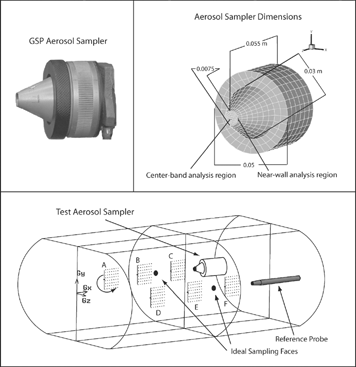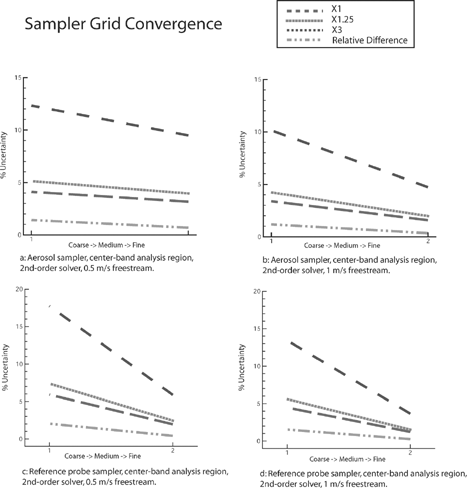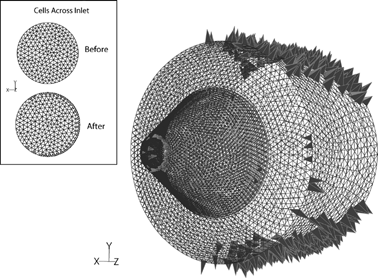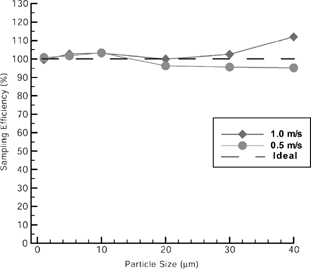Figures & data
Table 1 Cell numbers used in computational grids
Table 2 Low- and high-level coding map for parameter space analysis
Figure 1 Upper left: Photo of GSP sampler. Upper right: Dimensions of Computational Test Aerosol Sampler, surface mesh is for illustrative purposes. Bottom: Layout of Computational Aerosol Sampler, Reference Probe, Ideal Sampling Faces, and Particle Release Locations.

Table 3 Values determined from parameter space analysis to yield 10% or greater influence on desired results are shown in bold
Figure 2 Plotted uncertainties determined from grid convergence studies on three grid densities of simulation results of the test aerosol sampler and the reference probe sampler at 0.5 and 1 m/s wind speeds for the 0-degree orientation.

Figure 3 Scalar values for center-band comparison region at the inlet of the GSP sampler plotted against increasing grid density.

Figure 4 Computational surface mesh and grid elements on inside and outside surfaces of test aerosol sampler for nonconforming turbulent y + values tagged for adaption. Box: 2D slice of inlet cells before and after adaption.

Figure 5 Sampling efficiency of sharp-edged probe sampler from FLUENT calculations at freestream velocities of 0.5 and 1.0 m/s.
